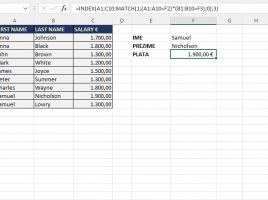
Multiple criteria MATCH
Sometimes, when working on business reports, there is a need to create a formula that contains several criteria for searching a range. When we have only one criterion, it is enough to use a combination of INDEX and MATCH functions. When there are more of them, it is already a bit more complicated situation. However, this is not too complicated either, you will see in the “recipe” that follows…




